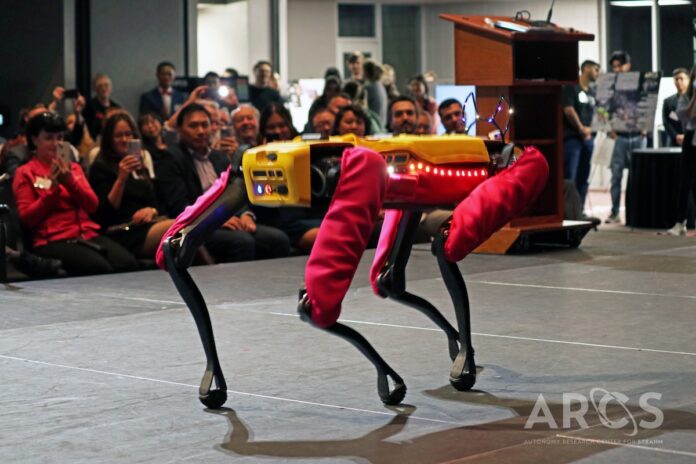With artificial intelligence becoming a growing topic of discussion, students at California State University – Northridge are among those working on projects in that sector.
In two rooms in the student union at the university, projects from students in the Autonomy Research Center for STEAHM, or ARCS program, were recently showcased.
The program’s founding director, Nhut Ho, said that the event on Dec. 1 at which the student projects – many of which involved artificial intelligence – were displayed served several purposes.
The first was to communicate to the public about the program’s vision and approach “to how we want to build a world where we can look at AI as amplified intelligence and create a better version of ourselves.”
The second purpose was to highlight the work of the professors and the students, Ho said.
“We had about 35 displays and provided the opportunity for attendees to learn about the work we are doing,” he added. “Just the feedback I got from the industry attendees; they enjoyed the conversations with the students.”
Industry attendees
Among the industry attendees at the event were representatives from large aerospace companies such as Northrop Grumman Corp. and Lockheed Martin Corp., along with medical device maker Medtronic, which has a facility adjacent to the university. Companies in the waste management industry and representatives from the Los Angeles Department of Water and Power were also in attendance, as were representatives from Walt Disney Imagineering in Glendale and Tetra Tech Inc. in Pasadena.
“The feedback I got was really educational and they said they got a lot out of it,” Ho said.
Beyond that, Ho said he has had a number of followup conversations with some of the industry representatives who now want to do research collaborations with the university as well as offer internships to students.
“In that aspect it was really a major success that we had that engagement and the industry folks got to know who we are and what we do,” Ho said. “This idea going forward is that we are going to be forming research collaborations and having our students do internships with them is all really positive.”
The third reason for the event was to highlight the students who have graduated and who engaged in STEAHM – science, technology, engineering, entrepreneurship and business, arts, humanities and mathematics.
Those students were Keiana Samoy, the first student from CSUN’s business analytics program to land a job at the Jet Propulsion Laboratory in La Canada-Flintridge; Melissa Chow, who did a 10-week internship at JPL this fall and was kept on as she worked on CADRE, a mission that will put three rovers on the moon this year; and Seyed Sajjadi, the founder and chief executive of nFlux AI in Los Angeles, a software company that has developed digital tools for manufacturers.
Ho said that Sajjadi, an Iranian immigrant, was trained under the model of working with different disciplines.
“When he started his company he did just that,” Ho said. “He brought different disciplines together to solve the problems his company was working on.”
The event also featured discussions between Ho and JPL Deputy Director Larry James, a retired Air Force lieutenant general, and Ali Dianaty, senior vice president for product innovation in diabetes at Medtronic.
He asked both about their views on AI and their work in the technology at their respective organizations.
“I got feedback, especially from students, who said they really enjoyed hearing the conversation and hearing the perspectives of these two leaders sharing their guidelines on how they can and should think about AI and how they reflect that in their research work,” Ho said.
